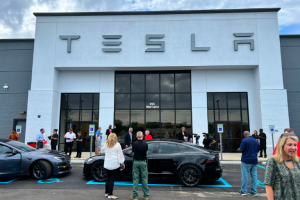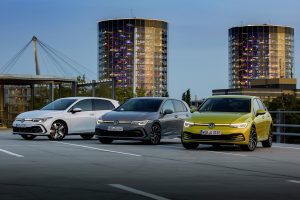- 🏭 Panasonic considers the potential for a third U.S. battery factory to boost annual production capacity.
- ⚠️ Another executive, CEO Yuki Kusumi, emphasizes the need to enhance productivity at current plants before adding a new factory.
- 💼 Kusumi highlights the preference for fewer production locations, stressing the importance of thorough productivity improvements.
- 🌐 Human resources requirements for additional plants prompt caution, advocating for increased production efficiency at existing facilities.
- 🚗 Panasonic aims to generate profits without relying on credits from the Inflation Reduction Act (IRA).
- 🌍 Current U.S. locations include Tesla’s Gigafactory in Nevada, with a second site under construction in Kansas.
- 🔄 The company plans to upgrade its 2170 and 4680 battery cells, expecting availability as early as this year.
- 🔋 Panasonic targets an increase in annual EV battery production capacity to 200 GWh by early 2031.
- 📈 The upcoming Kansas plant is anticipated to contribute to an annual capacity of around 80 GWh.
- 🤔 Amidst considerations for a third plant, Panasonic eliminates Oklahoma as a potential option for the next U.S. factory.
In the ever-evolving landscape of electric vehicles and sustainable energy, Panasonic emerges as a key player, contemplating the establishment of a third U.S. battery factory. This blog post delves into Panasonic’s considerations, challenges, and its broader strategy for shaping the future of battery production.
Unveiling Panasonic’s Ambition 🏭
- A Quest for Expansion
- Panasonic explores the potential for a third U.S. battery factory to significantly boost its annual production capacity.
- The move reflects the company’s commitment to supporting the growing demand for electric vehicles and renewable energy solutions.
CEO Caution: Balancing Growth and Productivity ⚠️
- Yuki Kusumi’s Insightful Perspective
- CEO Yuki Kusumi emphasizes the need to enhance productivity at existing plants before venturing into a new factory.
- Kusumi’s focus on fewer production locations underscores the importance of comprehensive productivity improvements.
Human Resources Dynamics 💼
- Strategic Workforce Considerations
- Addressing the human resources implications of additional plants, Panasonic exercises caution.
- The company advocates for heightened production efficiency at current facilities, aligning growth with workforce capabilities.
Financial Sustainability and Independence 🌐
- Profit Generation sans Credits
- Panasonic sets a bold goal of generating profits without relying on credits from the Inflation Reduction Act (IRA).
- This move signals a commitment to financial sustainability and underscores Panasonic’s drive towards self-sufficiency.
Current U.S. Footprint 🚗
- Gigafactory Presence and Kansas Expansion
- Panasonic’s current U.S. locations include the Gigafactory in Nevada, a crucial partnership with Tesla.
- The construction of a second site in Kansas is underway, marking a strategic expansion to meet the escalating demand for EV batteries.
Battery Cell Evolution 🔄
- Upgrading 2170 and 4680 Cells
- Panasonic plans a technological leap by upgrading its 2170 and 4680 battery cells.
- Anticipated to be available as early as this year, these advancements promise enhanced performance and efficiency in electric vehicles.
Future Capacity Targets 🔋
- Scaling Up Annual Production
- With a visionary outlook, Panasonic aims to increase its annual EV battery production capacity to an impressive 200 GWh by early 2031.
- This ambitious target aligns with the industry’s demand surge and the need for sustainable energy solutions.
Kansas Plant: A Catalyst for Growth 📈
- Anticipated Annual Capacity
- The upcoming Kansas plant is expected to contribute significantly, adding to Panasonic’s annual production capacity, projected to reach around 80 GWh.
- This strategic location ensures proximity to Tesla’s operations, fostering collaboration and efficiency.
Strategic Considerations 🤔
- Oklahoma Eliminated from the Equation
- In the complex decision-making process, Panasonic eliminates Oklahoma as a potential option for the next U.S. factory.
- This decision underscores the meticulous evaluation of factors influencing the location of new production facilities.
In conclusion, Panasonic’s dynamic approach to battery production underscores its commitment to innovation, sustainability, and strategic growth. As the company navigates the complexities of the evolving electric vehicle landscape, each decision shapes the future of clean energy.





